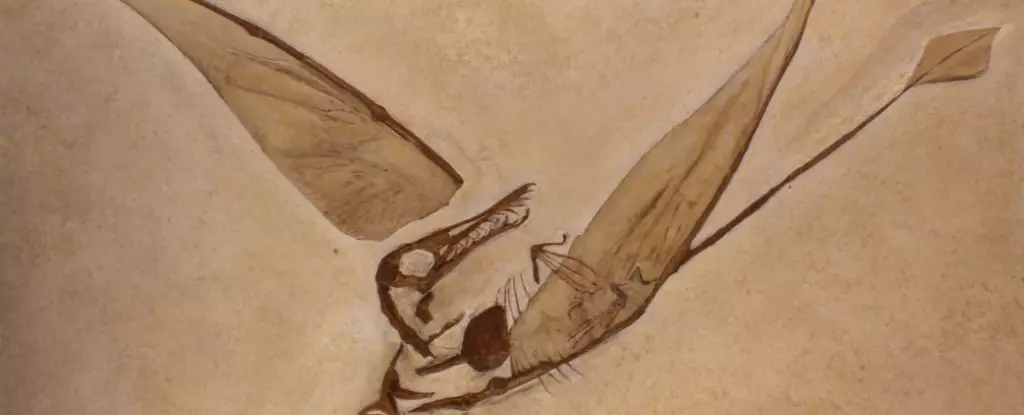Pterosaurs were the first vertebrates to take flight, doing so around 215 million years ago. Unlike birds or bats, they were flying reptiles that evolved from a separate branch of the reptile family tree. Their unique anatomy allowed them to dominate the skies during the time when dinosaurs roamed the Earth. However, their rare presence in the fossil record makes it challenging to understand the specifics of their flight adaptations.
Recent research has shed light on a crucial aspect of pterosaur flight – the stiffness of their tail vanes. While feathers and hollow bones certainly played a role in their aerial abilities, the lattice-like structure of the tail vane prevented it from bending in the wind, stabilizing the flight of these ancient creatures. This discovery offers new insights into how early pterosaurs were able to navigate the skies with such efficiency.
By examining well-preserved pterosaur fossils, researchers were able to identify the presence of soft tissue structures in the tail vanes of these ancient flying reptiles. Through advanced imaging techniques, they found a complex network of rods and fibers that formed a cross-linked lattice within the tail vane. This structure provided stability and control during flight, reducing drag and allowing for more precise maneuvering in the air.
The analysis of these exceptional pterosaur specimens not only revealed the importance of tail vane stiffness but also offered insights into the evolution of this structure. The researchers believe that the cross-linked lattice seen in early pterosaurs indicates a single contiguous structure from which the tail vane developed. This finding challenges previous assumptions about the origins of the tail vane, suggesting a more complex evolutionary pathway.
Comparisons to Modern Flight Adaptations
While pterosaurs had unique flight adaptations, such as the oar-like tail vane and propatagium tendon, similarities can be drawn to modern-day flying animals. Birds and bats also possess a propatagium on each wing, indicating some level of convergent evolution in flight mechanisms. The presence of fleshy folds at the end of pterosaur tail vanes further aligns them with the flukes of cetaceans, highlighting the diverse evolutionary pathways that have led to flight in different groups of animals.
The recent discovery of the importance of tail vane stiffness in early pterosaurs provides a valuable glimpse into the evolutionary history of vertebrate flight. By unraveling the mysteries of these ancient flying reptiles, researchers are not only piecing together the puzzle of prehistoric ecosystems but also gaining a deeper understanding of the diverse adaptations that have shaped life on Earth. As technology advances and more fossils are uncovered, we can expect further revelations about the incredible adaptations that allowed pterosaurs to soar through the skies millions of years ago.


Leave a Reply